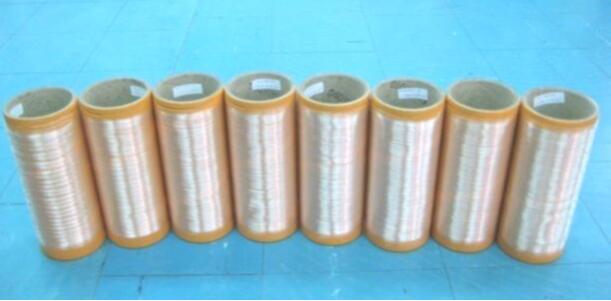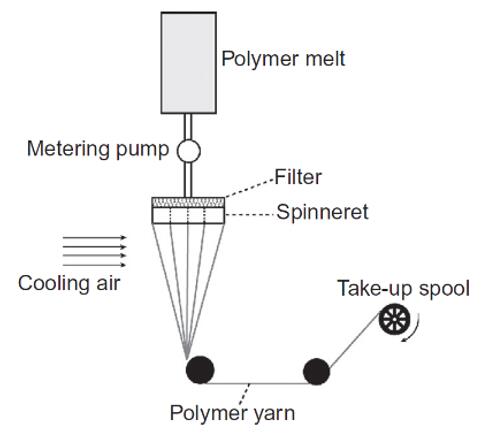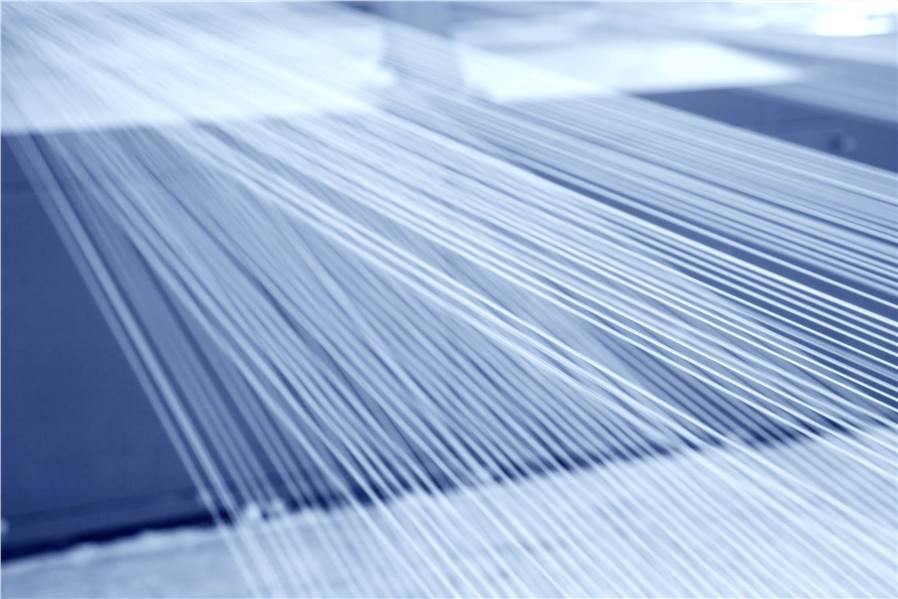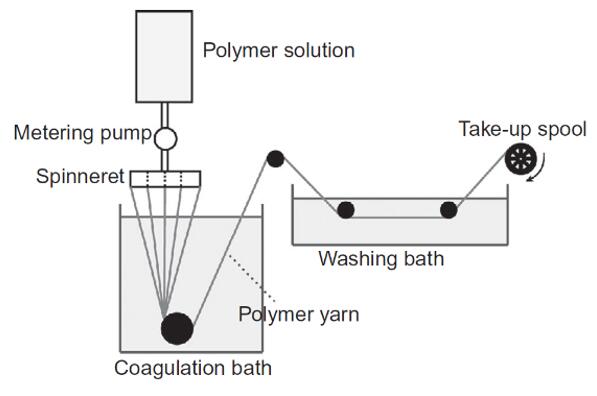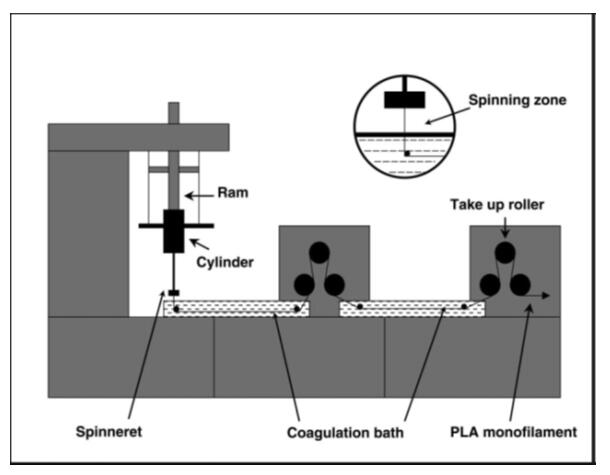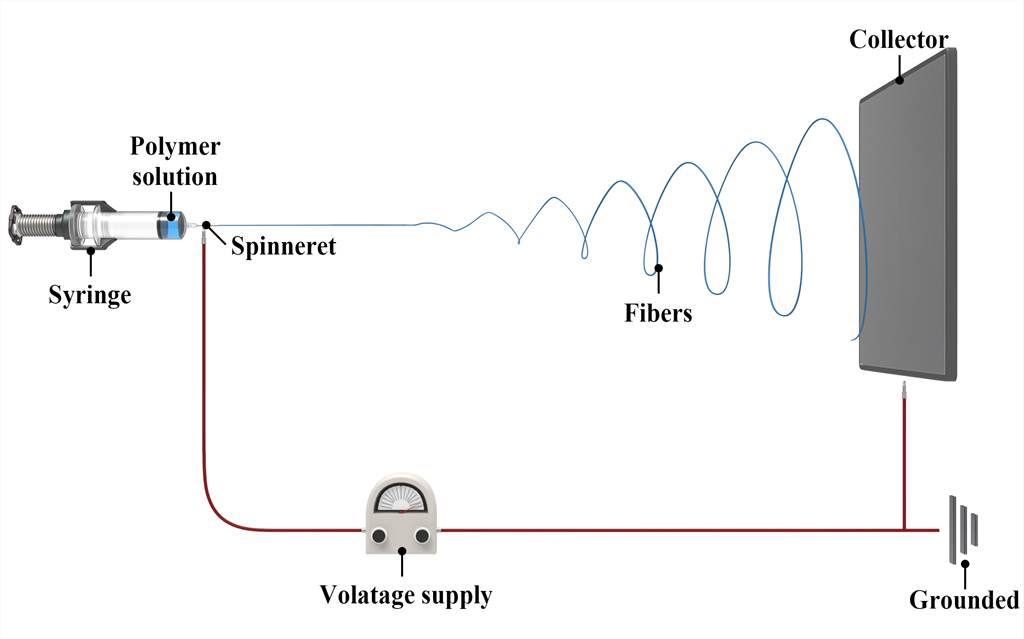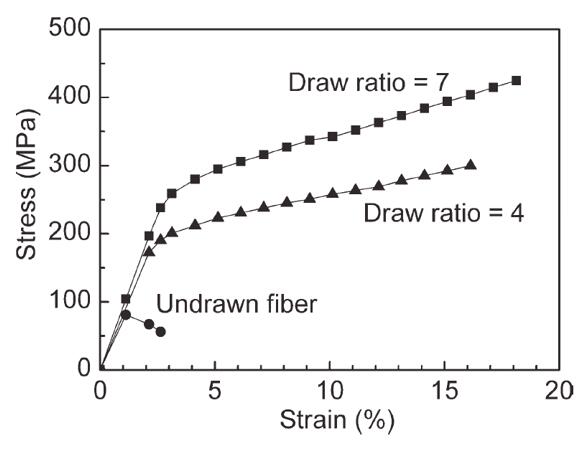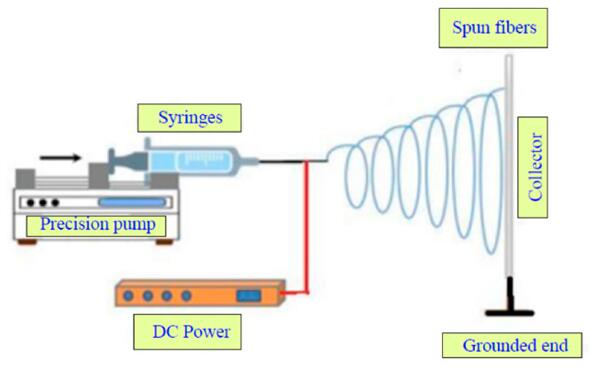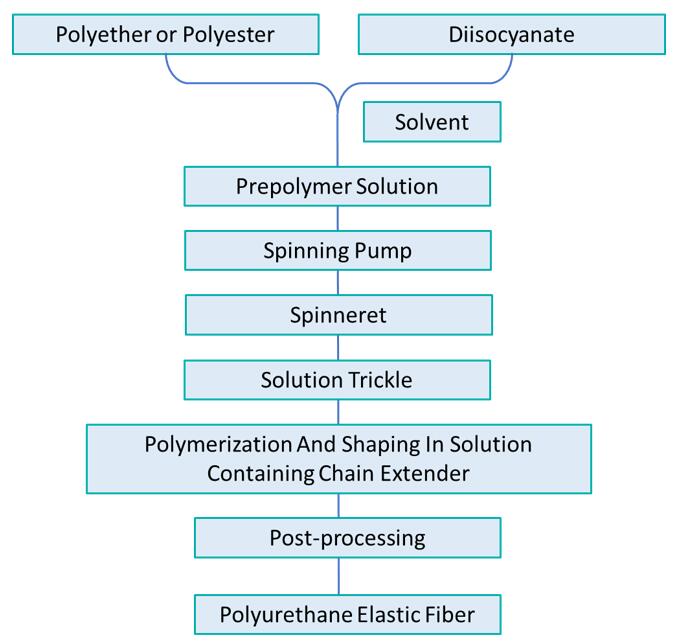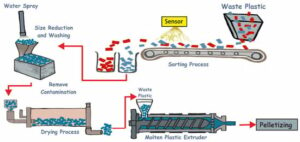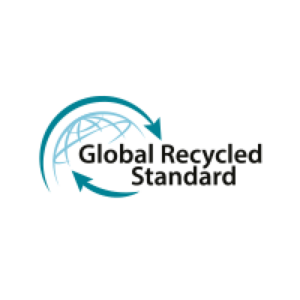In this artcle, we will study 4 types of spinning techniques: Melt spinning, Solution spinning, Electrospinning, Gel Spinning….
Melt Spinning Technical Service
Melt spinning technology is a chemical fiber spinning method in which the polymer is heated and melted, extruded through the spinneret, and cooled and solidified in the air to form fibers.
Application Scope
The polymers used for melt spinning must be able to melt into a viscous flow state without significant decomposition. That is, the fiber-forming polymer that has a melting point below the decomposition temperature and can be melted to form a thermally stable melt can be formed by this method. For example, polyester fibers, polyamide fibers, and polypropylene fibers can all be produced by melt spinning.
In addition, melt spinning techniques are also suitable for the preparation of blended fibers with multiple components, starting with suitable polymers as raw materials. For example, polylactic acid (PLA) and polybutylene succinate (PBS) can be used to prepare blended fibers by solution spinning techniques. Studies have shown that the addition of a certain amount of PBS can enhance the elasticity of PLA/PBS blend fibers.
PLA:PBS blends fibers for melt spinning technique.
Process Flow
Melt spinning techniques include direct spinning and chip spinning. The former is suitable for large-scale industrial production of fibers, but it is difficult to produce differentiated fiber varieties. The latter is suitable for producing small batches of differentiated fibers with high added value. The process flow of melt spinning technology roughly includes the following important steps
- Preparation of spinning melt
- Formation of melt stream
- Formation of spun fibers (the melt stream is elongated and solidified by cooling)
- Post-processing (oiling and winding of solid strands)
Spinning Characteristics
- High spinning speed (1000~7000m/min)
- No solvent and precipitant required
- Simple equipment
- Short process flow
Influencing Factors
Spinning technology has a certain degree of influence on the structure and even properties of fibers. In general, the resulting fiber structure is a function of spinning speed, drawing mechanism, heat-setting conditions, and so on. The stress-strain behavior of the material is also a function of spinning speed, as the fiber structure develops with increasing spinning speed because of polymer chain orientation and crystallization.
Cooperate With Us
- Experienced testing and research team
- Meet customer needs at all stages
- Efficient and cost-effective services
- Complete and advanced infrastructure
Research And Application
In addition to conventional fiber production applications, in some advanced researches, melt spinning technology is often used as a means of preparing advanced functional materials. For example, Henriette Probst et al. used a modified melt-spinning technique to prepare high-stretch conductive filament yarns with thermoplastic polyurethane (TPU) and conductive carbon nanotubes (CNT) composites as substrates.
The modified melt spinning technology.
Solution Spinning Technical Service
Solution spinning technology refers to a method in which a polymer solution is quantitatively extruded from a spinneret orifice, and the solution is solidified into a fiber through a coagulation bath or hot air or hot inert gas.
For some polymers that have been decomposed before being melted, solution spinning technology is one of the alternative spin-forming technologies. Solution spinning technology is divided into wet spinning, dry spinning, and dry-wet spinning (dry-jet wet spinning). Combining extensive experience,
- Wet Spinning Technical Service
The fiber-forming polymer suitable for wet spinning has a decomposition temperature lower than the melting point or is easily discolored when heated, and can be dissolved in a suitable solvent. Examples include polyacrylonitrile fibers, polyvinyl alcohol fibers, viscose fibers, cupro fibers, and so on.
Schematic diagram of wet spinning device
- Dry Spinning Technical Service
If a fiber-forming polymer can find a solvent with a lower boiling point and good solubility to make a spinning solution, then dry spinning technology is a candidate method. Common examples include acrylic, spandex, polyvinyl chloride fiber, etc. - Dry-Jet Wet Spinning Technical Service
This method combines the characteristics of wet spinning and dry spinning, and is especially suitable for the molding and processing of liquid crystal polymers, so it is also often called liquid crystal spinning. At present, dry-jet wet spinning technology has been used in the preparation of polyacrylonitrile fibers, polylactic acid fibers, chitosan fibers, dibutyryl chitin, polyvinyl chloride fibers, aramid fibers, polybenzimidazole fibers, etc.
Schematic diagram of dry-jet wet spinning of PLA fiber
- Others
In addition to its spinning technology services for conventional polymers,
Electrospinning Technical Service
Electrospinning technology is a method of spinning a polymer solution under high voltage static electricity.
Electrospinning technology is an emerging spinning technology that can be used for large-scale production of nanofibers and is suitable for the preparation of various polymer nanofibers. Combining rich experience, :
- Optional Polymers
Electrospinning can be used to produce nanofibers from almost any polymer, including synthetic polymers, regenerated cellulose, and natural polymers. Our electrospinning technology can be applied to dozens of different polymers, including flexible polymers such as polyester, polyamide, polyvinyl alcohol, polyacrylonitrile, etc., as well as polyurethane elastomers and the rigid polymers in liquid crystal state (poly(p-phenylene terephthalamide)). In addition, for thermoplastic polymer feedstocks, the melt electrospinning can be used to produce nanofibers or microfibers. - Functional Fiber Customization
Using electrospinning technology, Nanofibers prepared by electrospinning technology have the characteristics of large specific surface area, high porosity, easy size control, and easy surface functionalization (such as surface coating, surface modification). Examples of our key application fields of focus include nano catalytic fibers, filter materials, water treatment, drug carriers, and so on. - Others
We can produce nanofibers or even granules according to your needs. In addition, important metrics such as fiber size, orientation or disorder are customizable. Feel free to discuss your unique ideas with us and we will do our best to make your electrospinning ideas a reality.
Electrospinning Features
Compared with other fiber manufacturing methods, electrospinning technology has some incomparable characteristics, especially when used to prepare nanofibers:
- The only technology that can be used to produce nanofibers on a large scale.
- The operation is simple, the cost is low, and the product type is easy to change.
- It can be used to produce single-component or skin-core composite bicomponent nanofibers.
- Suitable for a wide range of raw materials.
- The electrospinning process parameters can be adjusted to easily tune the structure and properties of the nanofibers.
Gel Spinning Technical Service
Gel spinning, also known as semi-melt spinning, is a new spinning technology that produces high-strength and high-modulus fibers through a gel-state intermediate material.
Gel spinning provides relatively ideal structures for common soft-chain polymers to produce fibers of high strength and high modulus.
- High performance fiber customization
Using gel spinning technology, Our custom and development capabilities include high strength and high modulus polyethylene (PE) , polyacrylonitrile (PAN), polyvinyl alcohol (PVA), polyethylene oxide (PEO) performance fibers. In addition, customization and development of high-performance carbon fiber precursors and various composite fiber materials are also available. - Special fiber customization
Specialty fibers such as polytetrafluoroethylene (PTFE), gelatin and silk fibroin can also be obtained by gel spinning techniques. For example, studies have shown that gelatin fibers with very good mechanical properties can be prepared using ethylene glycol as a dispersion medium. If you have any unique ideas, please contact us to discuss your special fiber customization needs. Our spinning experts do their best to turn your ideas into reality.
Typical stress-strain curves for undrawn and drawn gelatin fibers
Process Flow
The gel spinning process is divided into four processes: preparation of spinning stock solution (dissolution), preparation of gel strands (spinning and formation), extraction and drying (solvent removal) and high-stretching. Each stage of the process has an impact on the fiber structure and properties. It is worth noting that in gel spinning, the choice of solvent and extractant directly affects the tensile stability, which is the key to the gel spinning method.
Gel Spinning Process Flow Diagram
Gel Spinning Feature
The high-stretch treatment of the fibers is a unique feature of the gel spinning process. High-stretching can transform the folded polymer molecular chain into a straight chain and improve the crystallinity and orientation of the polymer. This is unique to gel spinning and the key to improving the properties of gel fibers.
Reaction Spinning Technical Service
Reactive spinning refers to a spinning method in which the spinning fluid is extruded from the spinneret, and its solidification and forming speed is controlled by a chemical reaction.
Reaction spinning technology is a spinning method that combines the process of turning monomers or oligomers into polymers and the process of fiber formation. Combining rich experience,
- Optional Reaction Spinning Method
Reactive spinning methods can be further subdivided according to the stage of the spinning process at which the chemical reaction occurs: interfacial spinning, i.e., fiber formation during interfacial polycondensation; fiber formation during free-radical bulk polymerization (or polycondensation); fiber formation by the interaction of the polymer with the curing agent in the coagulation bath.
- Optional Spinning Technology
Reaction spinning technology is usually applied in combination with other spinning technologies, such as solution spinning, dry spinning, electrospinning, etc. For example, electrospinning polyacrylonitrile (PAN) solution and titanium isopropoxide solution through a coaxial electrospinning device can prepare PAN fibers coated with titanium hydroxide layer with a core-shell structure. The titanium hydroxide layer is formed by the hydrolysis reaction of titanium isopropoxide. After further heat treatment, TiO2 particle-coated carbon fibers can be obtained, which can be applied to photoelectric energy conversion.
- Optional Spinning Polymer
Various polymers are available, such as polyurethane, polyimide, polyacrylonitrile, and polystyrene, etc. Taking the preparation of polyurethane elastic fibers as an example, when the prepolymer solution is squeezed into the coagulation bath in a thin stream, it reacts rapidly with the chain extender (diamine or diol) in the coagulation bath to form polymer fibers.
Process Flow of Polyurethane Elastic Fiber
- Nanocomposite Fiber Customization
Some innovative nanofibrous materials can be customized by reactive spinning techniques, such as silica aerogel fibers, nanocomposite gel fibers, etc. If you have a special idea, we will do our best to help you turn it into reality.

